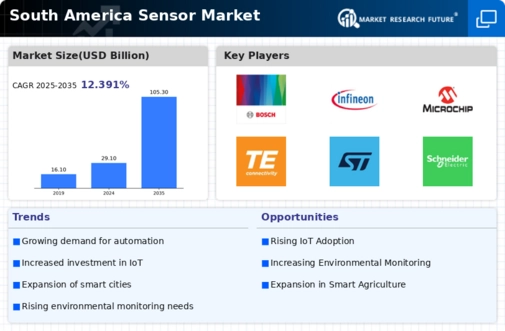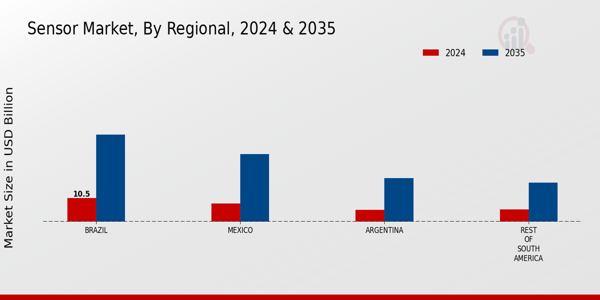The South America Sensor Market is rapidly evolving, characterized by diverse applications across various industries, including automotive, healthcare, industrial automation, and environmental monitoring. With the regional economies making significant strides towards technological enhancement, the demand for sensors is increasing. This market is fueled by the growing need for automation and the Internet of Things, prompting companies to innovate and expand their product offerings. Competitive insights in this landscape reveal a blend of both global and local players striving to capture market share through strategic initiatives, partnerships, and innovation.
As technology advances, sensors are becoming smarter, smaller, and more efficient, pushing companies to continuously adapt and differentiate their products in order to respond to the dynamic market needs within South America.
Emerson Electric holds a strong position within the South American Sensor Market, leveraging its extensive experience and technological prowess. The company's strengths lie in its comprehensive portfolio of automation and precision measurement solutions, which cater to various sectors, including oil and gas, manufacturing, and water management. Emerson Electric benefits from its established reputation and relationships within the region, allowing it to effectively meet localized demands with tailored solutions. Their commitment to innovation is evident through continuous investments in research and development, positioning them favorably against competitors.
Additionally, their focus on providing integrated solutions means they not only offer sensors but also the necessary infrastructure for data analysis and application, solidifying their presence and influence across South America.
In the context of the South American Sensor Market, Bosch is a major player recognized for its robust array of sensor technologies, particularly in automotive applications. The company’s product offerings include high-performance sensors for pressure, temperature, and position, which are essential for modern vehicular systems. Bosch's strengths lie in its deep understanding of market trends, ensuring that it aligns its innovations with local needs. The company has a strong market presence driven by its commitment to quality and reliability, which resonates well with consumers and industrial clients alike.
Additionally, Bosch has been active in pursuing alliances and partnerships to expand its capabilities and reach within the region.
These collaborations can often lead to mergers and acquisitions, enhancing Bosch's competitive advantage by integrating advanced technologies and expanding its portfolio in the South American market. Bosch’s proactive approach in not only providing products but also solutions that incorporate sensor technologies into broader systems further solidifies its stronghold in this growing market.























Leave a Comment